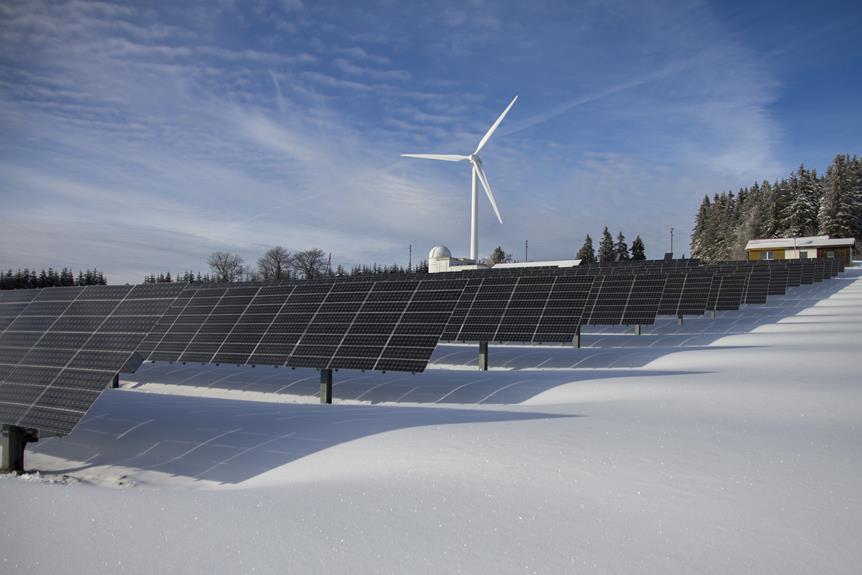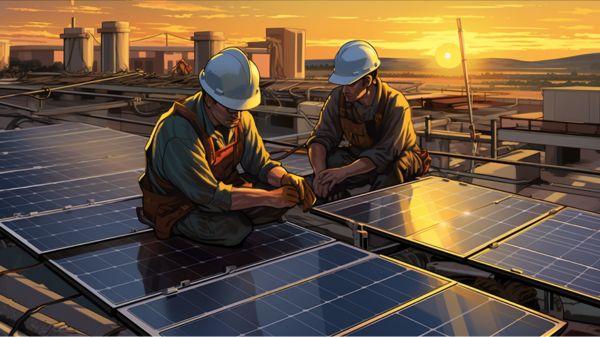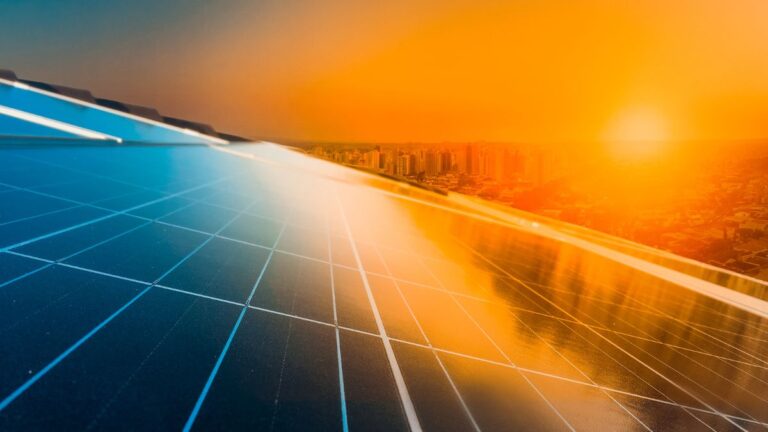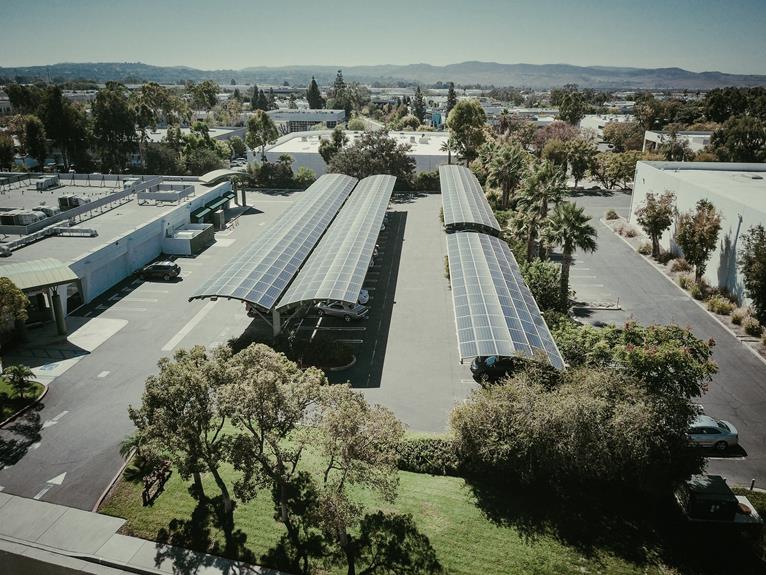Harnessing Solar Power: Off-Grid Solutions With Photovoltaic Cells
Looking to harness solar power and go off-grid? Want to explore the benefits of photovoltaic cells? With their ability to convert sunlight into electricity, photovoltaic cells offer a sustainable and reliable solution.
But how do you install and maintain these systems? In this article, we’ll guide you through the process, providing technical details and tips for optimizing your photovoltaic cells.
Whether you’re looking to power your remote cabin or reduce your carbon footprint, photovoltaic cells can help you belong to a greener future.
Key Takeaways
- Photovoltaic cells are highly efficient in converting sunlight into electricity and provide a cost-effective solution for generating electricity in remote locations.
- There are three main types of photovoltaic cells: monocrystalline cells, polycrystalline cells, and thin film cells, each with their own advantages and applications.
- When installing a photovoltaic system, it is important to assess energy needs, consider costs, evaluate solar panel placement, and ensure the quality of components.
- Regular maintenance and optimization of photovoltaic cells include cleaning and inspecting for debris or damage, troubleshooting common issues, and optimizing sunlight exposure.
Advantages of Photovoltaic Cells
When it comes to harnessing solar power off-grid, one of the major advantages of photovoltaic cells is that they’re highly efficient in converting sunlight into electricity. This high level of efficiency makes photovoltaic cells a cost-efficient solution for generating electricity in remote locations.
By efficiently converting sunlight into usable energy, photovoltaic cells minimize the need for additional resources and reduce overall costs. Moreover, the use of photovoltaic cells promotes environmental sustainability.
Unlike traditional power generation methods, which rely on fossil fuels and emit harmful greenhouse gases, photovoltaic cells produce clean and renewable energy. This reduces the carbon footprint and helps combat climate change.
With their cost efficiency and environmental sustainability, photovoltaic cells offer a reliable and responsible solution for off-grid solar power generation.
Types of Photovoltaic Cells
To understand the different types of photovoltaic cells, you can start by exploring their unique characteristics and applications.
Two commonly used types are monocrystalline and polycrystalline cells. Monocrystalline cells are made from a single crystal structure, which gives them a uniform appearance and high efficiency. They’re well-suited for applications where space is limited, such as residential rooftops.
On the other hand, polycrystalline cells are made from multiple crystal structures, resulting in a slightly lower efficiency but a lower cost. They’re more suitable for larger installations, such as commercial buildings.
Another type of photovoltaic cell is the thin film option. Thin film cells are made by depositing a semiconductor material on a substrate, allowing for flexibility and versatility in terms of shape and application. While they may have lower efficiency compared to crystalline cells, they excel in areas with low light conditions and can be integrated into building materials like windows and facades.
Understanding the characteristics and applications of these different types of photovoltaic cells can help you make an informed decision when selecting a solar power system for your off-grid solutions.
Installing a Photovoltaic System
Start by assessing your energy needs and determining the optimal location for installing a photovoltaic system.
When it comes to installing a photovoltaic system, cost considerations and solar panel placement are two crucial factors to keep in mind.
Firstly, consider the cost of the system itself, including the solar panels, inverters, and batteries. It’s important to compare prices from different suppliers and choose the most cost-effective option without compromising on quality. Additionally, think about the long-term savings that can be achieved through reduced electricity bills.
Secondly, carefully assess the location where the solar panels will be installed. Factors such as the angle and orientation of the panels, shading from nearby structures or trees, and the amount of sunlight the area receives throughout the year should be taken into account.
Maintaining and Optimizing Photovoltaic Cells
To maintain and optimize photovoltaic cells, you should regularly clean and inspect them for any debris or damage. Cleaning techniques include using a soft cloth or sponge with mild detergent and water to gently remove dirt and grime.
Avoid abrasive materials that could scratch the surface of the cells. Additionally, troubleshooting common issues can help ensure the efficiency of your system. One common issue is shading, where objects like trees or buildings cast shadows on the cells, reducing their output.
Regularly trim any overhanging branches or consider repositioning the panels for optimal sunlight exposure. Another issue is dirt accumulation, which can decrease the cells’ ability to generate electricity. Regularly clean the panels to remove any dirt or dust buildup.
By following these maintenance tips and troubleshooting common issues, you can keep your photovoltaic cells operating at their best.
| Issue | Cause | Solution |
|---|---|---|
| Shading | Trees, buildings, or objects casting shadows | Trim overhanging branches or reposition panels |
| Dirt accumulation | Dust, dirt, or debris buildup | Regularly clean panels with mild detergent and water |
Off-Grid Applications for Photovoltaic Cells
You can explore various applications for photovoltaic cells in off-grid settings. With advancements in technology, photovoltaic cells have become an efficient and reliable source of renewable energy. Here are some off-grid applications that can benefit from photovoltaic cells:
- Remote Communication Systems: Photovoltaic cells can power communication systems in remote areas, ensuring connectivity and enabling information exchange.
- Water Pumping Systems: Photovoltaic cells can be used to power water pumping systems, providing access to clean water in off-grid locations.
By utilizing photovoltaic cells in these off-grid applications, you can achieve energy independence while reducing your carbon footprint.
The efficiency of solar panels has improved over the years, allowing for better energy conversion from sunlight. Additionally, energy storage systems can be integrated with photovoltaic cells to store excess energy generated during the day for use during the night or on cloudy days. This ensures a continuous and reliable energy supply in off-grid settings.
Embrace the power of photovoltaic cells and join the growing community of off-grid enthusiasts who are making a positive impact on the environment.
Conclusion
In conclusion, photovoltaic cells offer numerous advantages for off-grid applications. Their ability to harness solar power provides a sustainable and environmentally-friendly solution.
With various types of photovoltaic cells available, it’s important to choose the most suitable one for your needs. Installing and maintaining a photovoltaic system requires attention to detail, but the benefits are worth it.
By optimizing the performance of the cells, you can ensure a reliable off-grid power source. Explore the possibilities and embrace the power of solar energy.






